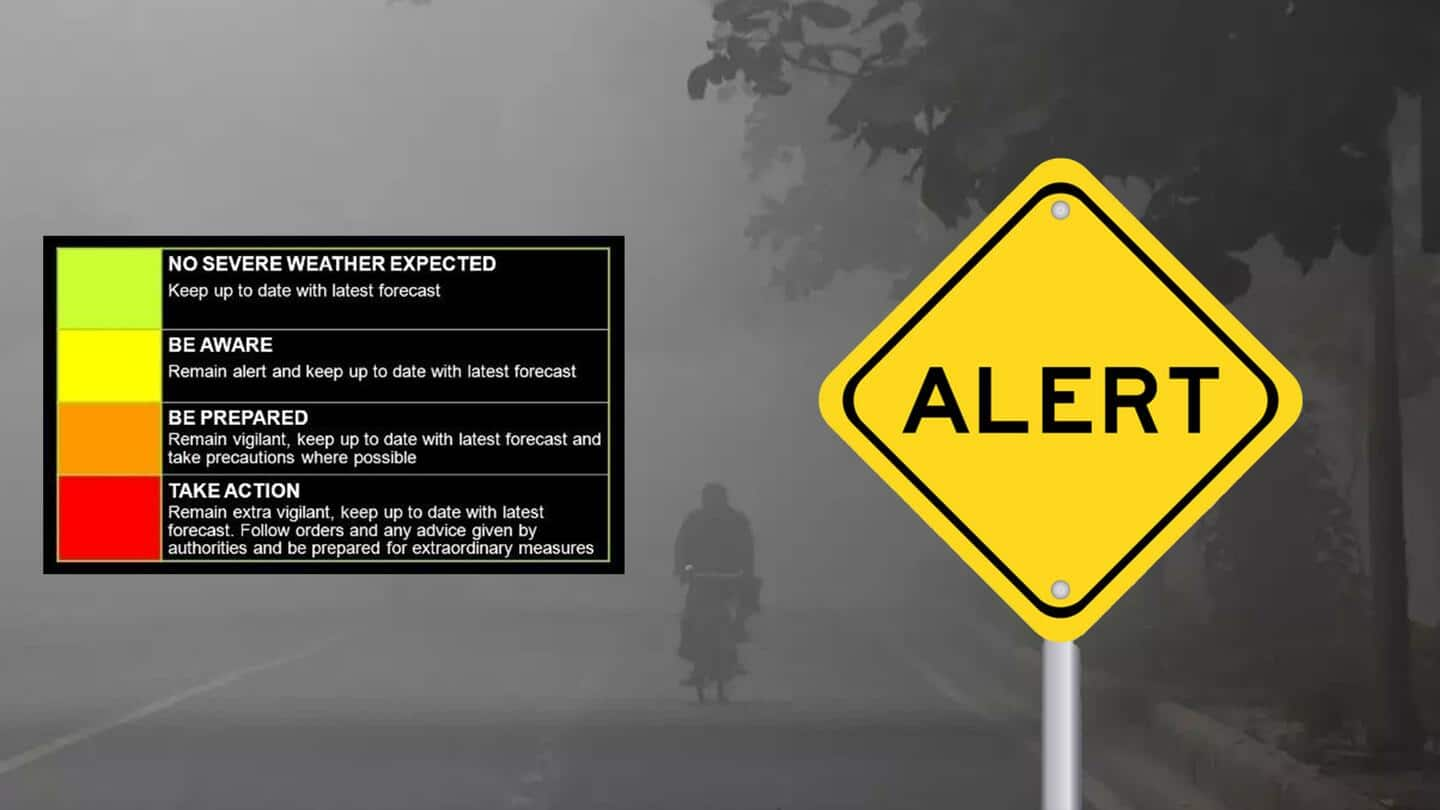
IMD issues 'yellow' alert as dense fog shrouds Delhi, Punjab
What's the story
The Indo-Gangetic plains remained shrouded in dense to very dense fog on Tuesday for the second consecutive day.
Visibility fell to 25 meters in Delhi and surrounding areas, impacting traffic movement, as the national capital recorded a minimum temperature of 6.3 degrees Celsius at the Safdarjung Observatory.
The India Meteorological Department (IMD) has issued a "yellow" alert for Delhi from Tuesday to Friday.
Context
Why does this story matter?
A dense fog layer developed in Punjab on Monday and moved toward Haryana and Delhi, spanning all the way to eastern Uttar Pradesh, which the weather department officials couldn't foresee.
Delhi saw its first spell of the dense fog of the season as the air quality index (AQI) deteriorated to the "severe" category.
Fog is the only natural weather phenomenon with high spatial variability.
Visibility
Low visibility procedures underway at Delhi airport
Visibility at Delhi's Palam airport area was at 25m and 50m at the Safdarjung airport.
Early on Tuesday, the Delhi Airport informed that low visibility procedures were being carried out since midnight and flight operations were normal.
The IMD issued an advisory for dense fog over Punjab, Haryana, Delhi, north Rajasthan, UP, Himachal Pradesh, Bihar, and Sub-Himalayan West Bengal for the next three days.
Twitter Post
Dense fog caused air quality to deteriorate
#DelhiWeather | Delhi covered in thick blanket of fog for second consecutive day.
— DD News (@DDNewslive) December 20, 2022
AQI touches ‘severe’ mark. pic.twitter.com/6ujW4iadBR
Other areas
Bathinda had zero visibility
Punjab's Bathinda had zero visibility at 5:30 am on Tuesday, while the state's Amritsar and Patiala, Rajasthan's Ganganagar, and Lucknow in UP reported 25m visibility.
The IMD categorizes the levels of fog as "very dense" when visibility is up to 50m, "dense" when it is between 51m and 200m, "moderate" from 201m and 500m, and "shallow" from 501m and 1,000m.
Details
IMD warns of road accidents, tripping of power lines
The IMD advisory warned of difficult driving conditions, tripping of power lines, train and flight delays, diversions, and cancellations.
People suffering from asthma and bronchitis could face shortness of breath, coughing, and wheezing, while long exposures could also lead to eye irritation or infection, it said.
Calm winds at night, low temperatures, and additional moisture from the northern plains contributed to the dense fog.
Accidents
Spell of road accidents caused by fog
Two died and over a dozen commuters were injured as dense fog caused around 40 vehicles to pile up on the Dussehra flyover in UP's Bulandshahr on Tuesday morning.
Earlier, low visibility due to dense fog reportedly caused around half a dozen vehicles to collide, which left some people hurt, on the Greater Noida Eastern Peripheral Highway (EPH) in Dadri, UP, on Monday.